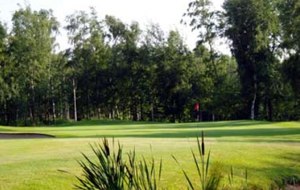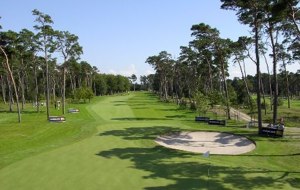
Golf in Sweden
Sweden has made name for itself in the golfing sphere over the past decade or so, with the success of golfers such as Jesper Parnevik, Henrik Stenson and Annika Sorenstam. Whilst this isn’t surprising given the quality of golf in Sweden, it is when considering the long winters, conditions, and the relative lack of golf courses on offer until the boom in the 1990s. In this decade, there was a 72% increase in the number of courses being built, thanks largely both internal and external demand. Swedish people, as well as Scandinavians as a whole, are well known for enjoying outdoor activities and, coupled with the increased popularity of the sport and economic stability , it is perhaps unsurprising that demand for golf course places often outstrips demand in a country that has risen to the fore as a player in the European golf scene.
Climate
The one main issue with playing golf in Sweden is the weather. In Southern Sweden, snow covers the ground from December to April, and temperatures can sometimes fall to below 30 Degrees Celsius; in Northern Sweden, the first snowfall often arrives as early as October. As a result, most of the country is ice bound in winter. In some areas of Northern Sweden, the sun never rises above the horizon and, in the South, there is only about six hours of daylight in mid-winter. Of course, the spectacular Northern Lights are an attraction in themselves and a Natural Wonder of the World, but visiting Sweden in the winter doesn’t bode well for a golf holiday.
It isn’t all doom and gloom, however, and in reality, the poor winter climate is only really a problem for those die-hard golfers that live in Scandinavia. Sweden has a much milder climate than most other regions of the world that lie as far North. Sweden’s climate is influenced by the Gulf Stream – a stream of warm ocean water that flows off Norway’s west coast. During the summer, golfers can take advantage of the warm summer weather and lack of rain, in all parts of the country. Another peculiar characteristic of summer golf in Sweden is continual sun in some areas North of the Arctic Circle. The adventurous golfer could tee off at midnight and finish in daylight. Where else in the world could you say the same thing? As summer ends, Sweden offers golf in crisp, autumn air, with an array of colours as leaves turn red and gold. Some islands, including Oland and Gotland, give golfers the change to experience wonderful scenery and play golf late into the year, as warm ocean currents help keep them free from frost.
Courses and Geography
The courses in Sweden are varied, and are mainly defined by their geographical location. Forest and areas of woodland account for a large portion of Swedish territory. Southern Sweden tends to be more agricultural and hosts more parkland style courses, with increasing forest cover coming as you move northwards. Fifteen percent of Sweden lies north of the Arctic Circle, with the mountainous and hilly areas mainly prevalent in the west of the country.
Broadly speaking, the courses in Sweden fall into three different categories: the parkbana, the skogsbada and the park och skogsbana. Parkbana courses mean park courses, and are typically built on rolling terrain previously used for agricultural purposes. They are styled on typical English parkland courses, with a mature and well maintained landscaping. Skogsbana courses are generally tighter and more undulating, set in hilly areas surrounded by trees and forests. Accuracy is paramount, but even someone playing poor golf will be cheered up by spectacular vistas offered by this type of golf course. Park och skogsbana courses are, more or less, a hybrid of the other two, with courses running through flat meadows and forests that lie above them. Links courses can also be found in some southern areas of Sweden.
With such variation and, perhaps more significantly, a reputation for high quality, it really is no surprise that golf in Sweden is booming. There are more than 300 courses on offer, many of championship quality, which, thanks to Sweden’s topography, are often hewn from rugged coastline and carved through giant forests with winding streams. That is not to say, however, that golf in Sweden is restricted to the elite. There are numerous pay and play courses, as well as snow courses and all night golf courses, and the Swedish green fee is lower than in many other parts of Europe. Sweden is easily accessible from the UK, there is a wide range of accommodation options available to the golfer, and Swedish people are generally considered as some of the nicest in Europe.
 Halmstad Golf Club
Halmstad Golf Club
There are so many popular areas and courses in Sweden that it is hard to pick out just two to discuss, but Halmstad Golf Club warrants a mention. Situated on Tylosand in the south east of the country, Halmstad houses the South and North Courses – both par-72 championship courses. Both courses are inundated with brooks, ravines and sloping fairways, which really add to the beauty of the landscape. The experience is enhanced with the sounds and smell of sea water and pine, despite the expanses of water never coming into view. Each hole on the quiet and tranquil course is like a long wooden corridor, effectively screening what goes on outside of what seems like your own little world. This peaceful club, which hosted the Solheim Cup in 2007, offers the perfect environment for a relaxing round of golf.
 Barseback Golf and Country Club
Barseback Golf and Country Club
Barseback, located just North of Malmo in the South, has been voted the best golf course in Sweden on numerous occasions, and is currently ranked as one of the ten best European clubs. The club is comprised of two courses: the Masters, a championship course, and the Donald Steel. Set on the Oresund coast, the Masters course really is something to behold. It has a links feel with sand dunes and true, fast greens, but the course also winds its way in and out of woodland areas, passing heather fields, areas of parkland and marshland with migratory birds, and fairways flanked on both sides by scented pine trees. Seven holes are played through a beautiful pine forest and four next to the sea. It really is as diverse a golf course as you will find anywhere in the world.
Whilst Sweden may not immediately spring to mind when considering where to go on a golf holiday, the quality and diversity of its golf courses are second to none. What’s more, it has its own endearing niches - such as snow golf and continual sunlight in the summer - and one of the highest rates of return custom in Europe. It is easy to see why, and with low prices from www.golfbreaks.com, it is definitely a destination worth considering for a different golfing experience.
Related Content:

















